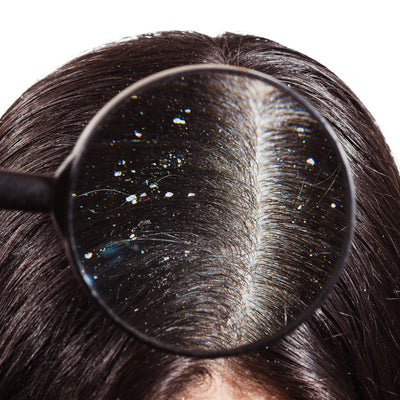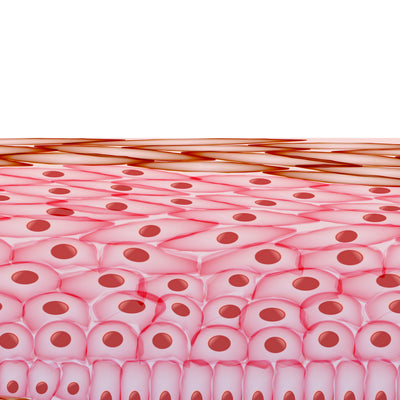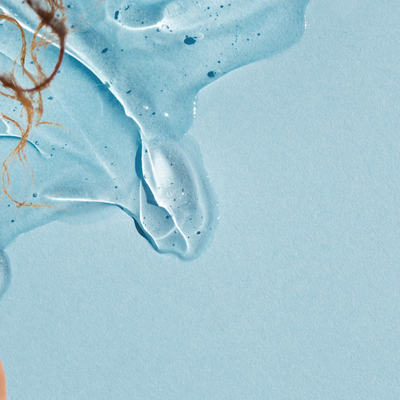
I Hate My Hair
Susan Walker| May 11, 2019
I wrote this article 10 years ago in 2012. I'm posting it again now due to the fact that as I consult with women about taking care of their natural hair, I realize that - though they have returned to displaying their natural hair - not everyone has embraced it. And there has been a journey they needed to go on in order to do this. So this article is as relevant today as it was 10 years ago. Enjoy the article and I welcome any comments or feedback on the post.
I’ve been natural for almost 3 years and after I did the Big Chop I rocked wash n’ gos. They were my go to style. They were easy, the curls were coming out in full force and I loved the style. As my hair grew, the product I used for my wash n’ gos just wasn’t working any more and I started formulating a product, and a line of products that would eventually work beautifully. However something happened. As my hair became longer I began wearing it in twist outs. The products I used to accomplish the style made my hair soft, defined my curls beautifully and gave it incredible shine. This has now replaced the wash n’ go for my go to style.
Recently, I decided to do a wash n go again. I hated it. Now don’t get me wrong, there was nothing WRONG with the look. It was big, it was curly and it was beautiful. But it wasn’t the look that I was going for. It wasn’t what I wanted. I gave my 8 month old a sideways glance. Her hair is silky, shiny, and curly and requires minimal product and manipulation to achieve what I wanted my hair to achieve. I looked back in the mirror at my hair. I wanted my daughter’s hair. In fact, the more people I saw, the more I wanted their hair and not my own. I wanted their soft texture, their curl pattern; their everything. I started thinking about my hair care regime. I put in work for my hair to look the way it does! I properly wash and condition it every 1-2 weeks, I moisturize it, I twist it (which takes time) and I re-twist my hair every night to get the look I’m going for. I found myself wishing that I didn’t have to do all of this in order for my hair to have the finished look I wanted. I finally became so fed up that I put flat twists in my hair to give myself a psychological break.
I took them out two days later still not liking my hair. Where was this coming from? One word – disappointment.
Disappointment often comes from unmet expectations. I was disappointed that my hair wasn’t able to be manipulated into the vision I had in my mind. How many times have we looked at someone else’s hair and thought to ourselves “I love her hair!?” What we are really saying is that we want her hair. “Her” could be anyone and in my case, it was my daughter’s hair. Shame on me. I was coveting the hair of my little 8 month old daughter, with its silky texture, easy manageability and cute curls. I started thinking about the hair textures of other natural women I knew and wondering why my hair couldn’t be more like theirs. I felt like my three-year old daughter sulking in the corner when I tell her she can’t watch Treehouse. It was very childish and immature but it’s what I felt. Once my pity-party was over I looked in the mirror.
There is a confrontation that occurs when women decide to go natural. We are confronted by the appearance of our hair – the texture, the curl pattern, the way the light hits the strands, the colour, the density, etc. etc. But that’s just the surface. The emotion that goes along with natural hair is real and sometimes raw. We remember how we may have been made fun of when we were younger by children of either our same ethnicity or other ethnicities, for having nappy, kinky hair. Or when young girls with the more desirable curly hair textures were liked or seen more attractive than those with tightly coiled hair. And if you’re single there may be some doubt as to whether a man will find you attractive with your big curly hair over a woman with straight and sleek hair. And don’t get me started on feelings of insecurity and acceptance in the workplace with your natural hair, especially if you work with individuals who are Caucasian.
Lastly, what about your own feeling of being attractive as you begin to embrace your natural hair after being told in subtle (and not so subtle) ways that it wasn’t beautiful? The psychological toll can be enormous. Maybe it’s just me that felt some of these emotions stirring in me when I looked into the mirror when I did the big chop about 3 years ago, and again recently.
But I don’t think so.
These reasons, and so many more, are why many women opt to wear wigs, weaves and braids before they go natural, or while they are natural. They have no idea what to expect from the hair, how to manage it, and the emotion that can come from embracing who they truly are. In essence, they’re not ready for the confrontation and to be honest, I don’t blame them.
So here I was looking in the mirror, and seeing something different than what I’d seen over the past 2 1/2 years of being natural. I didn’t love my hair at this moment in time and I realized that this was okay. I realized that it didn’t mean I didn’t accept who I was or what God gave me; it meant that I was having a bad hair day and probably didn’t feel good about myself at this moment for a number of reasons and this played out in how I felt about my hair. I realized for me that loving my hair is a dynamic process. I will not love it at every moment in time and that’s okay. I understood that for the look I wanted my hair to achieve, I had to put more work in and that’s okay. The great thing about textured hair is that it is so malleable and workable; it can be styled and manipulated into almost any position imaginable. I settled on the fact that my wash n’ go style would result in big hair with tight s-shaped curls and that was okay and I would rock the style with confidence. Lastly, I accepted that my hair texture is what it is and I would need to fully embrace it if I am going to truly experience being natural. I realized that with proper hair care I’ve been able to achieve the softness and manageability I never thought possible, based on the texture and appearance of my hair.
One day I was speaking to a young woman at the church I attend about her natural hair. I was telling her that I was looking at her hair for a long time and secretly coveting her curls and hair texture. What she said next surprised me. She told me that while I was wishing I had her hair texture, she was wishing she had mine!
We all go through periods of time where we don’t feel or look the way we want to. We’ve all wished we had what someone else had, even when what we have is beautiful! Wearing our hair natural is a journey full of ups and downs, excitement and nervous tension. It can be frustrating and amazing at the same time. Loving our hair requires action on our part. We have to put in work both emotionally and practically to do so and we need to fully embrace our hair with all of its strengths and perceived weaknesses in order to truly accept it in its natural state. We think the grass is always greener on the other side, but if you take the time to water yours, it will be green too.
About Susan Walker
 Susan is the CEO of Earthtones Cosmetics, a licensed Naturopathic Doctor and certified Trichologist with the World Trichology Society.
Susan is the CEO of Earthtones Cosmetics, a licensed Naturopathic Doctor and certified Trichologist with the World Trichology Society.
She has been a speaker and workshop presenter at various national and international conferences including the Taliah Waajid World Natural Hair Health and Beauty Show in Atlanta, the Toronto Natural Hair Show, The Canadian Naturalista Hair Expo and the Natural Hair Congress in Montreal.
Susan performs hair, hair loss and scalp consultations at TrichoSpa by Earthtones in Ajax, Ontario, a holistic skin, hair + scalp spa and curl care boutique. We specialize in corrective curl, scalp and skin care using trichological treatments for various scalp and hair concerns, and corneotherapy to correct skin issues. She has obtained various certifications in hair loss and scalp conditions.
In order to help her clients she has received her Laser Technician Diploma and certificates in Chemical and Mechanical Exfoliation, and Microneedling and Collagen Induction.
She is currently pursuing her Masters in Science in Cosmetic Science.
Featured Articles
-

-

Nurturing Your Scalp: Unveiling the Role of the Stratum Corneum
October 24, 2023 Susan WalkerREAD MORE -




